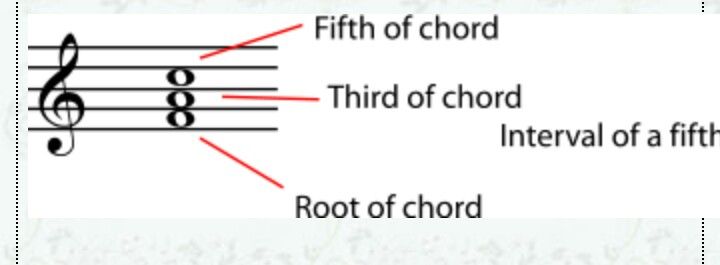Fact in music (TRIADS)
Harmony in Western music is based on triads. Triads are simple three-note chords built of thirds.
Note
The type of interval or chord - major, minor, diminished, etc., is not important when you are determining the position of the chord. To simplify things, all notes in the examples and exercises below are natural, but it would not change their position at all if some notes were sharp or flat. It would, however, change the name of the triad - see Naming Triads.
Root note is C: Example
C- chord : which is Doh
It comprises of three notes, which are Doh, mi, soh. ( C E G )
)
First and Second Inversions
Any other chord that has the same-named notes as a root position chord is considered to be essentially the same chord in a different position. In other words, all chords that have only D naturals, F sharps, and A naturals, are considered D major chords.
Note
But if you change the pitch or spelling of any note in the triad, you have changed the chord (see Naming Triads). For example, if the F sharps are written as G flats, or if the A's are sharp instead of natural, you have a different chord, not an inversion of the same chord. If you add notes, you have also changed the name of the chord (see Beyond Triads). You cannot call one chord the inversion of another if either one of them has a note that does not share a name (for example "F sharp" or "B natural") with a note in the other chord.
If the third of the chord is the lowest note, the chord is in first inversion. If the fifth of the chord is the lowest note, the chord is in second inversion. A chord in second inversion may also be called a six-four chord, because the intervals in it are a sixth and a fourth.
Hi! I am a robot. I just upvoted you! I found similar content that readers might be interested in:
https://www.earmaster.com/music-theory-online/ch05/chapter-5-1.html
Interesting post. Just very pity that the posting of music is impossible. I prefer to listen several examples to understand the text better.
Alright i will get back to you
